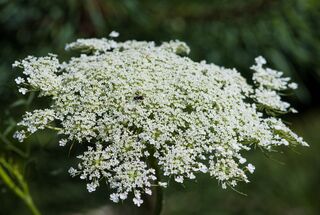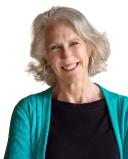Career
How I Wrote a Book About a Touchy Topic
Why it was worth every moment.
Posted March 11, 2021 Reviewed by Jessica Schrader
“Please read the poem on Page 37,” the woman’s email read, “then look at the notes on Page 60.” I felt like I was on a Choose Your Own Adventure junket.

Earlier in our exchange, I’d apologized to poet Suzanne Sigafoos, whose book This Swarm of Light came out in 2020, for not yet writing her a review. I was procrastinating, you see, because I’m intimidated by poetry. Odd for a writer, I know, but not so very rare.
On Page 37 was a poem I understood only too well. Titled “Missing,” it wove a beautifully rendered story of Suzanne’s infertility. Tears welling, I turned to Page 60. Suzanne had dedicated her poem to me.
My tears were washed in waves of gratitude. I’ve never had work dedicated to me before. I found it a little overwhelming and a lot wonderful.
I met Suzanne about five years ago at a writing event, introduced by a mutual friend. She wasn’t reading that night, so we sat together. I was just starting to interview women for my book Do You Have Kids? Life When the Answer Is No, always on the lookout for more participants.
When I told her about my project, she visibly started.
“I don’t have kids,” she said, “and might be willing to talk. Tell me more.”
I told her how after trying unsuccessfully for kids, I’d searched for resources that described how my life might unfold. Our culture offers lots of role models for how to be a mom and a dad, but then there was very little material for those of us who don’t and never would. So I decided to write a book exploring life without kids of one’s own.
In a former life, I was a human resources professional and did gobs of interviewing. From personal experience I knew broaching a topic like this would be delicate, so I designed a two-session process, the first to set the stage and build trust, the second to dive deeper into areas of interest discovered in the first conversation.
During the first sessions I gathered personal information, particularly about their family of origin—siblings and their offspring, birth order, the amount of contact they had with biological family. I also had a short list of questions designed to gauge experiences with different aspects of life—work, family, friendship, housing, health, and legacy.
Because we were talking about the impact of not having a specific experience, which is challenging to wrap one’s head around, we scheduled the second conversation for a week or two after the first. We’d focus on the woman’s selected topic of interest.
Suzanne peppered me with questions about the process and intent, then agreed to give it a go. Hers was one of my few in-person interviews; most were by phone, which offered both of us a faceless buffer.
Everyone who’s writing a book with profiles should include a poet. Suzanne’s responses were thoughtful, her words carefully selected. That’s what she’s trained to do. As an interviewer, I could hear nuggets of wisdom throughout her story. After transcribing her recording, which I did for all my interviews, it was challenging to whittle down her content.

Such would be my experience with over 100 interviews. I learned the power of witnessing one’s story, the sparseness of questions needed when the interviewer is willing to provide space for others to fill.
At the end of our second interview, every single woman I interviewed thanked me for listening to her story, confessed it was the first time she’d been asked to share it, and had no idea how powerful it would be to tell.
Armed with research findings from academics and journalists’ reportage, which was sparse and challenging to unearth, it was time to weave the material into a cohesive whole. To organize the narrative, I followed a rough chronology of the lifecycle—from work-life and impacts on friendships and family relations to end-of-life planning and what we leave behind when we die.
Early readers identified a missing thread in the narrative—the close-up perspective. They urged me to include my own story and discoveries, which I had resisted under the guise of impartiality. Truth is, I was afraid.
Suddenly my own experience was up for examination. Questions I’d asked others haunted my dreams. Revelations channeled from my unconscious and traveled through my fingers onto the keyboard. Mornings I would read what I’d written the day before, as if in third person. I see now why people get hooked on memoirs. Was this my life I was reading about?
Putting words on the page, I discovered links between life experiences big and small that had previously eluded me—like my dad’s death, husband’s job losses, and infertility. Making sense and integrating my own life story continues. Those I interviewed have told me the same happened to them after our conversations.

Today there are many of us non-parents around the world working tirelessly to build greater understanding, acceptance, and inclusion of non-moms and dads—in print, on film, in podcasts and webinars. It’s delicate work, work that can be challenging at times.
For me, the most impactful payoff comes in those small moments of connection, when we plug into a sense of belonging and shared experiences, when we listen to others’ stories and someday find the courage to speak out with our own.




